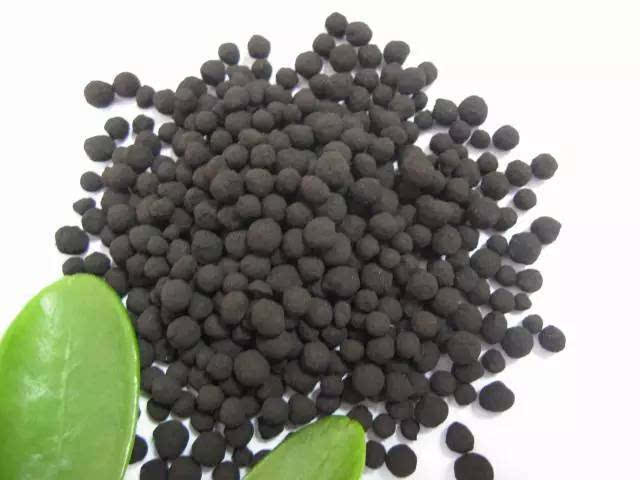
2021-08-02
Practice has proved that in the process of agricultural soil pollution control and soil improvement,Humic acidIt has shown better and better results. So, what is humic acid? Why can humic acid fertilizer be used to repair soil? Let's find out together!
1. What is humic acid?
1. Humic acid is a macromolecular organic substance that exists widely in nature.
2. Humic acid is the remains of animals and plants, mainly the remains of plants, a type of organic matter that is formed and accumulated through the decomposition and transformation of microorganisms, as well as a series of geochemical processes. Some fermentation processes in modern industry can also produce humic substances. Bacterial acid.
3. The raw material sources of humic acid can be divided into two categories: coal-based substances and non-coal-based substances.
4. The former mainly includes peat, lignite and weathered coal; among them, the content of humic acid reaches 10-80%. my country's coal reserves are very rich. According to data, there are 5 billion tons of peat, 126.5 billion tons of lignite, and 126.5 billion tons of weathered coal. There is no statistical data for coal. The latter includes soil, water, fungi and other non-coal substances, such as substances containing phenols, quinones, sugars, etc., which can generate humic acids through biological fermentation, oxidation or synthesis, such as the current market. The humic acid produced by the fermentation of grains to produce monosodium glutamate.
5. Humic acid is the main component of humic substances with a complex chemical structure. It is a mixture of various active functional groups such as carboxyl groups, phenolic groups, ketone groups, and phenolic hydroxyl groups. The special structure and physical and chemical properties of humic acid determine its ecological important role in repair.

2, the effect of humic acid
1. Stimulate growth: humic acid contains physiologically active substances, which have a stimulating effect on the growth and development of crops and physiological metabolism in the body. Inorganic fertilizers do not have this characteristic. The development has a special promotion effect, the root is fast, the secondary root is more, the root volume increases, the root system is elongated, and the ability of the crop to absorb water and nutrients is increased.
2. Improve fertilizer efficiency: after the application of humic acid, its active groups can combine with nitrogen to reduce the volatilization of nitrogen fertilizer and prolong fertilizer efficiency; it can complex or chelate with iron and aluminum to reduce phosphorus fixation caused by the formation of iron phosphate and aluminum. , increase the moving distance of phosphorus, stimulate rooting; combine with potassium, reduce the lattice fixation of potassium, increase the amount of effective potassium, promote fruit expansion and color, and improve fruit quality, thereby improving fertilizer utilization.
3. Improve the ability of crops to resist stress: the high content of soil organic matter provides an excellent living environment for beneficial microorganisms. Robust, enhanced disease resistance, and will significantly reduce disease..
4. Improve quality: The application of humic acid can increase the sugar content of apples, grapes, strawberries, etc., increase the content of starch, protein, and vitamin C, and reduce the content of nitrate and nitrite in vegetables and fruits, thereby improving fruit quality.
5. Soil improvement: humic acid organic colloids combine with calcium ions in soil to form flocculent gel, which can cement soil particles, increase the water-stable aggregate structure in soil, and coordinate soil water, fertilizer, gas and heat conditions , Water retention, fertilizer retention increase, especially for the improvement of thin soil such as too sticky or too sand.
3, the usage of humic acid fertilizer
1. Seed soaking: Seed soaking can improve the germination rate of seeds, early emergence, and enhance the ability of seedlings to grow roots. The general seed soaking concentration is 0.005-0.05 percent, the general seed soaking time is 5-10 hours, and the hard shell seeds such as rice and cotton are 24 hours. .
2. Root soaking: rice, sweet potato, etc. can be soaked with sodium humate or potassium humate solution before transplanting, and the concentration is 0.01-0.05 percent. After soaking, the roots appear fast and the survival rate is high.
3. Spraying: The general concentration is 0.01-0.05 percent solution, spray 2-3 times during the flowering period of crops, and the spray amount per mu is 50 liters of aqueous solution. The spraying time should be selected at 2-4 pm for good results.
4. Base fertilizer: solid humic acid fertilizer (such as ammonium humate, etc.), generally 100-150kg per 6 mu. When humic acid solution is used as base fertilizer, the concentration is 0.05-0.1%, and the amount per 6 mu is 250-400 liters of aqueous solution, It can be mixed with farmyard fertilizer and applied in furrows or holes.
5. Top dressing: before the seedling stage and heading stage of crops, use about 250 liters of aqueous solution with a concentration of 0.01-0.1 percent per 6 mu, and water it near the root system of the crops. The paddy field can be applied with water or sprinkled on the water surface, which can improve the seedlings. , strengthen seedlings, and promote growth and development.